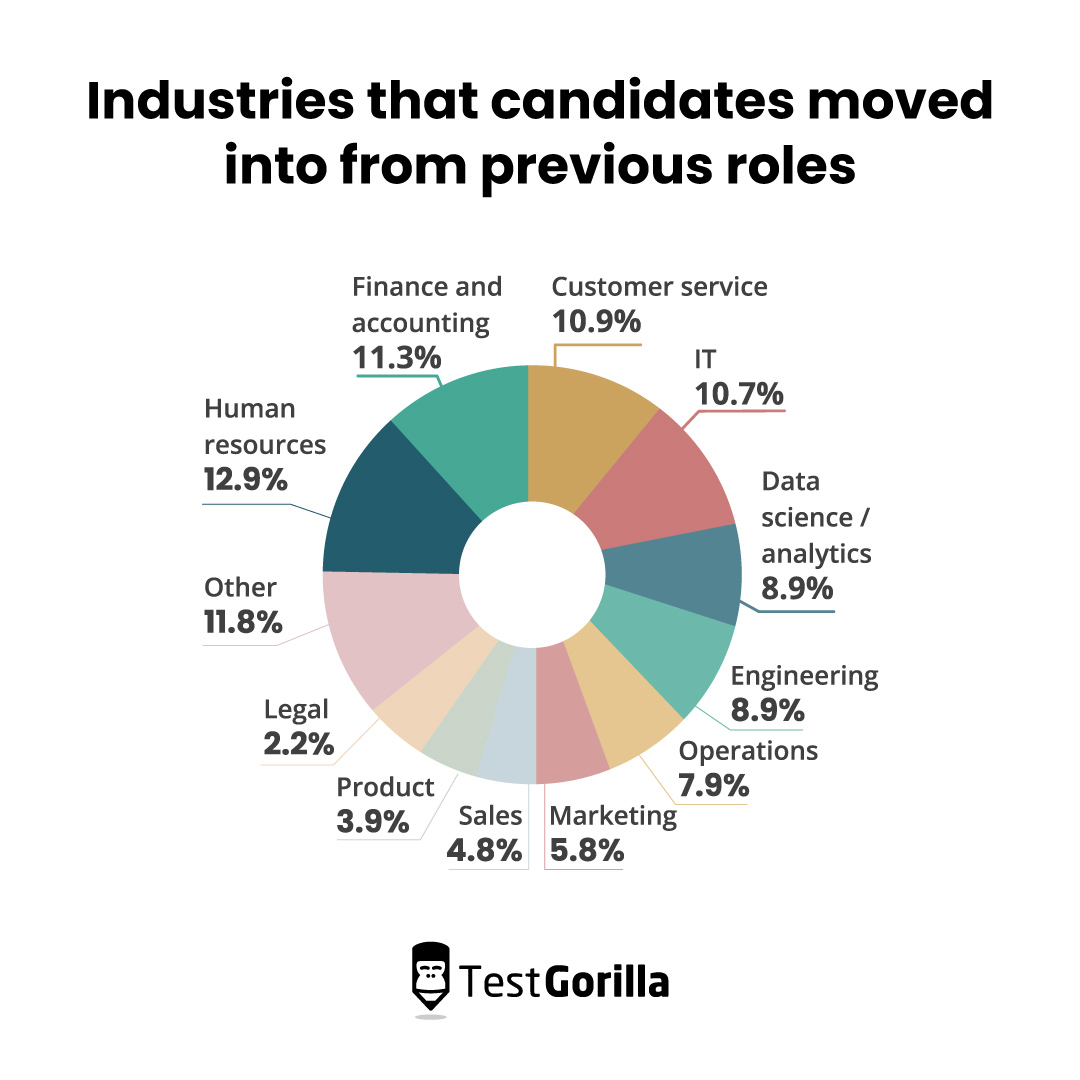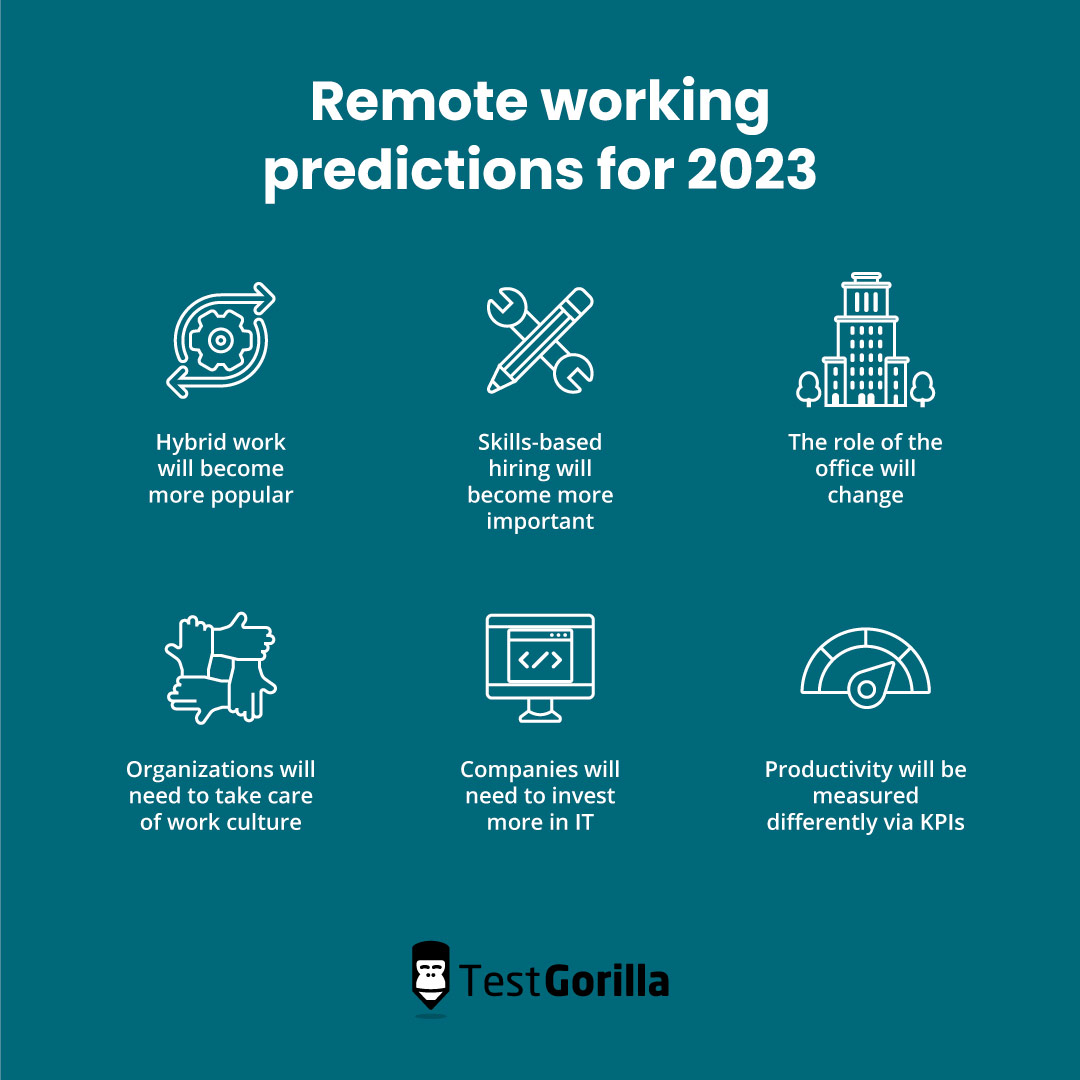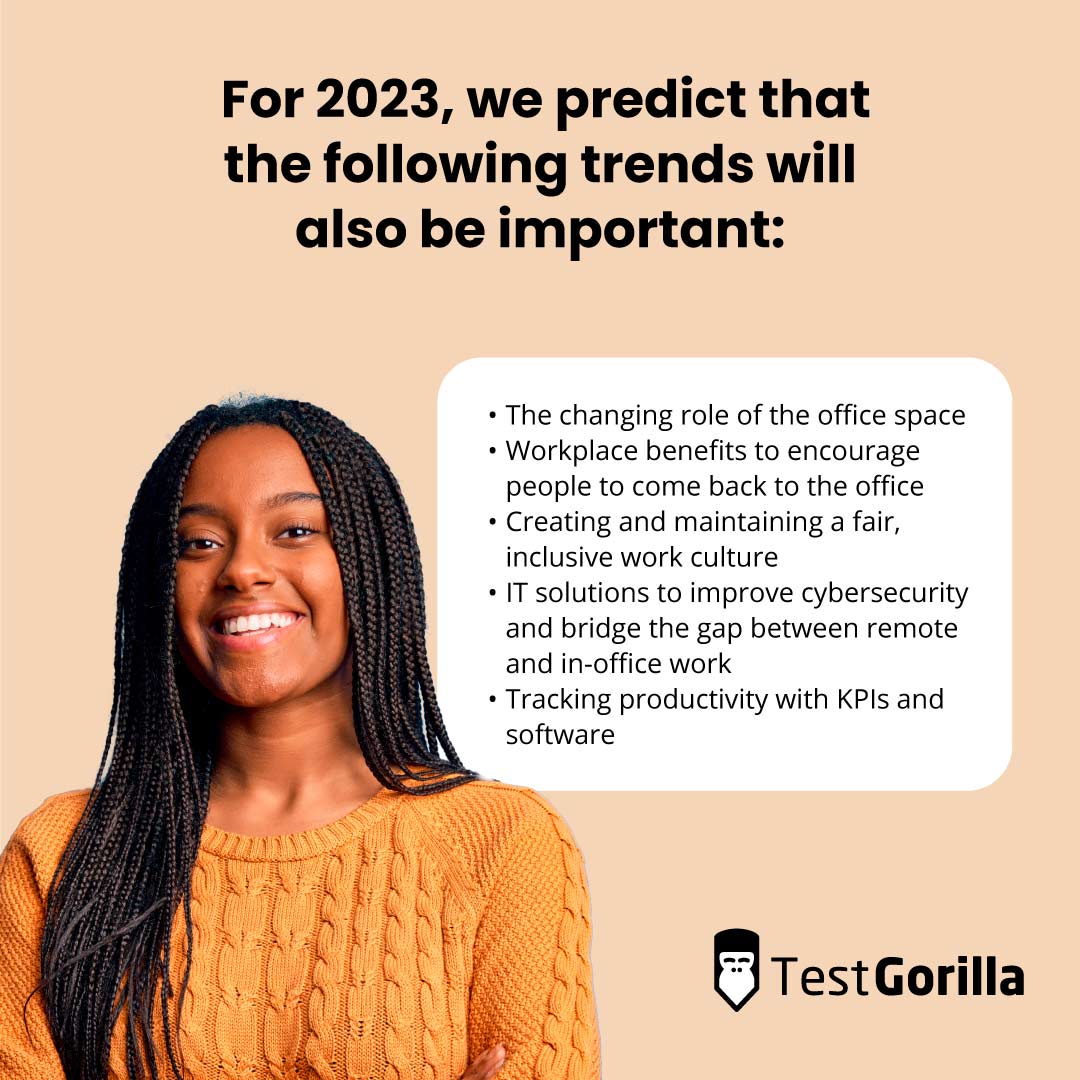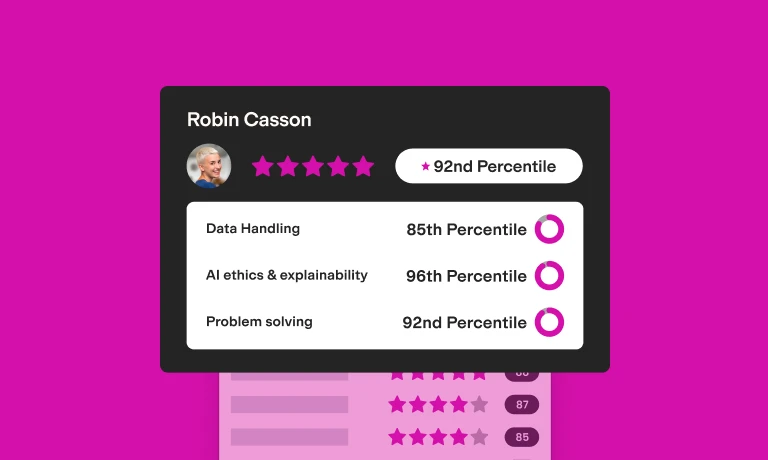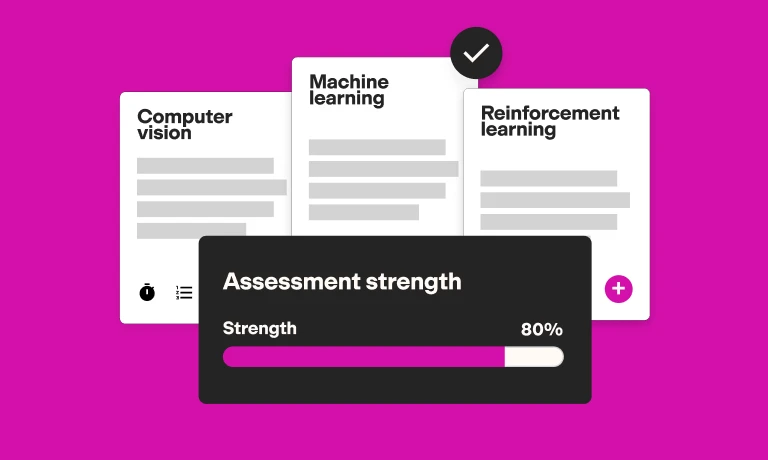The “Great Resignation” saw employees quitting their jobs en masse and searching for roles with greater flexibility and opportunities for advancement. This means remote work models have gone from nice-to-have to must-have to attract talent.
But although these models offer an improved employee experience, they come with challenges for employers, such as organizing teams and optimizing and tracking productivity.
Now, with a recession brewing, these challenges are leading some leaders to consider bringing teams back into the office.
But a move like this could have serious impacts on employee motivation. Worse still, some employees who rely on flexibility to accommodate personal responsibilities could struggle to readjust – and may even resign.
Hybrid work is one solution. It offers a way to keep employees satisfied while maintaining a strong team culture and fostering collaboration. And there are other remote work trends you can jump on to keep employees engaged and on track – wherever they are.
In this post, we explore the future of remote work, current trends, and the implications for your company, employees, and future hires.
What do the statistics say about the impact of remote work?
As of early 2023, more than 18% of employees work remotely full-time. Many more mix home and office work in what’s known as a “hybrid” model, and 42% of employees would prefer to work remotely full-time.
The shift to remote work means companies that don’t require workers to be physically present now have access to a wider, global talent pool. According to our report, The State of Skills-Based Hiring 2022, finance and accounting, customer service, and IT are among the industries currently benefiting from the trend to greater occupational mobility.
Occupational mobility is high across many industries, but highest among those that are highly tech-enabled
What are the benefits of remote work?
For companies, flexible or hybrid working brings several benefits, from decreased office costs to increased diversity, thanks to the opportunity to hire candidates who were once overlooked, like working mothers.
Employees from all walks of life report increased happiness at work when they can work remotely. More than 60% of workers also feel they are more productive when working outside of the office, and 52% would take a pay cut of 5% or more in exchange for greater flexibility in working location.
These statistics confirm that remote work isn't just a future of work trend. In 2023, it's become a core part of the business landscape.
Why some companies aren't convinced about remote work
Despite the positives, 41% of small organizations and 27% of larger organizations were in favor of employees returning to the office in 2022. In fact, 85% of managers cite challenges in being confident about remote employee productivity.
Among other companies, Twitter abolished remote work, largely owing to concerns over communication and output. There are also challenges with recruiting remotely and managing a global team across different time zones.
The impact on company culture can also be significant, with 40% of workers reporting feelings of loneliness at least some of the time.
6 predictions for the future of remote work in 2023
Here are our predictions for the remote work trends that will drive organizations in 2023. We’ll also discuss how you can turn remote working challenges into opportunities.
1. Hybrid work will become more popular
To attract and retain talent, you need to strike a compromise that offers the benefits of remote working while addressing the challenges of managing remote employees. Hybrid work is one possible solution since it lets you build a strong culture and high productivity while still offering flexibility.
According to recent research by Accenture, 63% of high-growth companies are using a hybrid work model. This should be well received by employees, 36% of whom preferred this model in 2022.
This sentiment is particularly strong among Gen Z and millennials, with nearly 40% pointing to hybrid working as their ideal way to work.
This may be because it enables employees to enjoy catching up with colleagues and brainstorming in the office but also focus on work at home. In this way, they can achieve high productivity and a work-life balance while still being connected to their employers.
2. Skills-based hiring will become more important
With remote or hybrid working, virtual hiring becomes necessary. And when your teams can be anywhere, it opens up opportunities to more people, from stay-at-home mothers to those with disabilities.
However, remote hiring has its challenges. It’s harder to evaluate people when you can’t meet face to face, so you need other ways to determine their fit for the role. And traditional resume-based screening processes are prone to bias, especially if information like gaps in work history due to childbirth is used to screen out potential candidates.
Despite greater opportunities with remote working, our report shows that fewer women than men were hired over the past 12 months. And seven times more Black people were unemployed in 2022, according to data from the Economic Policy Institute.
This means there’s a clear need to ensure you’re including everyone in your remote recruitment strategies and giving all candidates a fair shot at proving their suitability for open positions.
Skills-based hiring can level the playing field for diverse candidates by providing a fairer way to screen them based on skills rather than education, work history, or connections. Hiring in this way helps you build a more diverse distributed workforce that can transform business through innovation, increased productivity, and even increased revenue.
Indeed, the vast majority of remote-first organizations have begun realize the benefits of embracing skills-based hiring. Data from our report shows that 75.5% of fully remote companies have adopted this methodology into their recruitment process along with 81% of hybrid companies.
Of the companies surveyed, 56% adopted this trend within the past two years, which illustrates the seismic impact of Covid-19 on hiring practices. As businesses continue to move toward hybrid and remote working models, the shift toward skills-based hiring shows no signs of letting up.
3. The role of the office will change
In 2022, 37% of employers said they had plans to shrink or close their offices. With less real estate and people using rooms on an ad-hoc basis, companies need to be intentional about including spaces suited for different types of work.
Meeting rooms are great for strategizing and collaboration, for example, whereas focus work can take place at desks or in quiet rooms. With no fixed desks, however, it’s important for employees to communicate when they are coming in.
And to navigate the impact of remote working on company culture, you need to listen to their preferences for collaboration. Some employees may prefer to schedule weekly in-person meetings, for example, whereas others look to communicate via asynchronous messaging software (more on this later).
4. Organizations will need to take care of work culture
If some employees work on-site more than others (who may need to work remotely full-time, perhaps owing to disability, childcare, etc.), you need to create and maintain an inclusive, fair work culture.
Employees returning to the office want to feel compensated for the sacrifices they make by coming in. Benefits like commuter perks and on- or off-site childcare can help offset the time and money they have to spend. Google’s free electric scooter initiative is a great example of this.
On the other hand, ensuring that remote workers feel included and heard is key to maintaining a strong remote work culture. Around 50% of employees feel that managers view those who come into the office as harder working and more trustworthy. Overcoming this proximity bias means making time to connect with remote employees and reward their work.
Identifying opportunities to upskill and reskill employees can also strengthen your workplace culture by increasing engagement and boosting retention. When people perceive that you’re looking out for their professional growth, they feel rewarded and more aligned with company goals, wherever they work.
5. Companies will need to invest more in IT
In light of concerns around productivity, many companies are looking to invest in new systems to keep remote teams connected.
Here are some of the key pieces of tech to consider:
Video meeting technology. More than 25% of people report that their video tech is limited and that they are forced to physically move cameras around to include remote participants in presentations. Optimizing setup with high-quality video and audio saves time during calls and includes remote employees.
Collaboration tools. Software like Slack (asynchronous messaging) and Toggl (time-tracking) make it easier to unite remote teams and keep track of productivity by enabling people in different time zones to collaborate and track time-on-task.
Watertight cybersecurity tools. Security skills shortages, vulnerable networks, and greater opportunities for cyberattacks make security even more important in the age of remote working. Invest in data protection software, vulnerability management, and a security awareness program to overcome this.
Productivity boosting software. Though nobody wants to spy on employees, in 2022, 81% of companies that implemented productivity-boosting software (like add-ons that block social media sites) saw an increase in individual productivity.
6. Productivity will be measured differently via KPIs
Whether or not you choose to use productivity assessment software, you’ll need to change how you measure productivity. Where once you could rely on weekly check-ins in the office, it’s now easier for people who are struggling to fall through the cracks.
Key performance indicators (KPIs) can include specific skills-based standards. These let you track the use and development of skills tested during the hiring process. For example, if teamwork is important, setting a relevant KPI lets you assess how well a new remote employee communicates with managers and colleagues.
Here are some of the other metrics that you can measure:
Reply times. Finding out who is slower to reply to peer or customer messages can help you spot employees who need support.
Skills retention. Having tested candidates’ skills, it’s essential for you to measure how well they retain and improve their knowledge. For example, you could take a look at how much additional training your employees are undertaking.
Average task completion time. In addition to ensuring operational efficiency, this will help you pinpoint where people are struggling so that you can support them.
The best insights on HR and recruitment, delivered to your inbox.
Biweekly updates. No spam. Unsubscribe any time.
Remote work trends: the way to capitalize on growing occupational mobility
As more and more employees leave their jobs in search of greater flexibility, you need to offer remote work options to attract and retain talent. However, although this has several benefits, including increased employee satisfaction, it also comes with challenges.
HR professionals and managers share concerns about tracking productivity, team management, and assessing fit when hiring remotely. But bringing everyone back into the office isn’t always an option.
Hybrid work is a promising alternative. It offers a way for you to capitalize on occupational mobility while retaining company culture and optimizing productivity.
Either way, virtual hiring is necessary for both models, so skills-based hiring is one way to avoid bias. By assessing people objectively and anonymously based on skills rather than background, you let all candidates have a fair shot.
We predict that the following remote work trends will also be important in 2023:
The changing role of the office space
Offering workplace benefits to encourage people to come back to the office
Creating and maintaining a fair, inclusive work culture
Implementing IT tools to improve cybersecurity and bridge the gap between remote and in-office work
Tracking productivity with KPIs and software
When you implement these trends, you can boost work output, create an inclusive work culture, and get happier, more engaged employees – no matter where they work from.
Want to offer remote working without remote problems? Skills-based hiring lets you find the right fit for every role, no matter where they are. Download the 2022 State of Skills-Based Hiring report to learn more.
Related posts
You've scrolled this far
Why not try TestGorilla for free, and see what happens when you put skills first.


